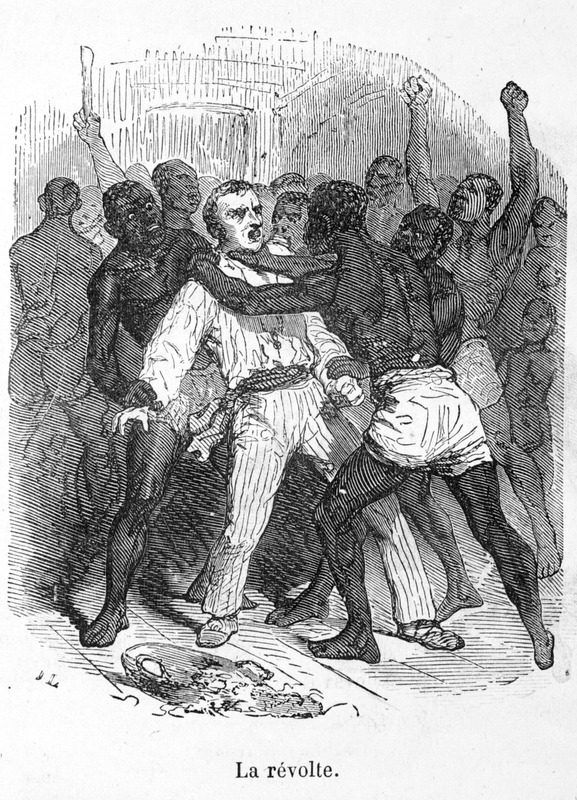Revolt Aboard Slave Ship, 19th cent.

Based on the account of an old sailor who had participated in the Atlantic slave trade; this illustration, however, is not based on observations, but on artistic imagination. Conditions aboard a French slaver are described (pp. 252 ff.), and the old sailor describes how one night he was asleep when he heard a big noise on the bridge; he went up only to discover the slaves had started a revolt. A slave revolt is terrible because one cannot fire on them, since each man is worth at least 1,000 francs. One has to resort to other methods of force. The crew finds refuge on the upper deck to escape the screaming mass of slaves who broke through their chains and evaded the deck barrier by throwing anything they could get their hands on at our heads. . . . The carnage was horrible. Even though the enemy was beaten, the victory didn't seem to belong to us yet, and the danger became even greater in front of the resistance of the slaves and our exhaustion . . . ( (p. 265; our translation).
Image Title
Revolt Aboard Slave Ship, 19th cent.
RegID
SI-OB-787
Title
Revolt Aboard Slave Ship, 19th cent.
Source
Albert Laporte, Récits de vieux marins (Paris, 1883), p. 268. (Copy in Library Company of Philadelphia)
Language
French
Item sets
Slave Ships & the Atlantic Crossing (Middle Passage)
Spatial Coverage
Atlantic
Reproduced In
Albert Laporte, Récits de vieux marins (Paris, 1883), p. 268.
Researchers
Handler, Jerome; Tuite, Michael; Randall Ericson; Henry B. Lovejoy Graduate Research Assistants: Tiffany Beebe; Travis May
Identifier
LCP-14